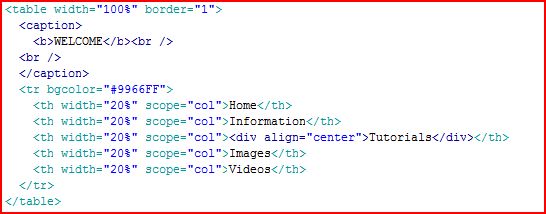And then there are programs or WYSIWYG editors (What You See Is What You Get), which provide a user friendly graphical user interface (GUI) for web authoring. The user does not need to have comprehensive knowledge of HTML coding as HTML editors encode the information into the correct format. One prominent web authoring program is Adobe's Dreamweaver.
So there are a few rules for creating html files:
filename must be in lower case
no special characters in filename
extension is .html
text needs to be in plain text without any formatting, any text editor can be used.
The basics of the html language or code are quite simple:
the graphical representation of text and objects - content - on the web is determined by tags, usually a pair of tags, the "start tag" and "end tag". The tags are enclosed in <brackets>. For example <b>web</b> will create the word web in bold typeface.
Similarly, other formatting also needs to be done through tagging:
<head></head>
<title></title>
<body></body>
<header1></header1>
etc.
Below is what the code or instructions would look like to create a table with 1 row and five columns containing the text: Home, Information, Tutorials, Images, Videos.
<a href=http://www.webaddress>Click here to go to webaddress</a>
Upload images
Images can be uploaded from their source, the images folder needs to be in the same directory as the webpages. Attributes like width, height, border and explanatory text can be included.
<img src="images/webphoto.jpg" width="60" height="80" border="0" alt="Image from Illustrator"/>
Here is an excellent site with all the codes explained, including examples and explanations, and there are also tutorials. Highly recommended!
And here is a hexagonal colour chart

No comments:
Post a Comment